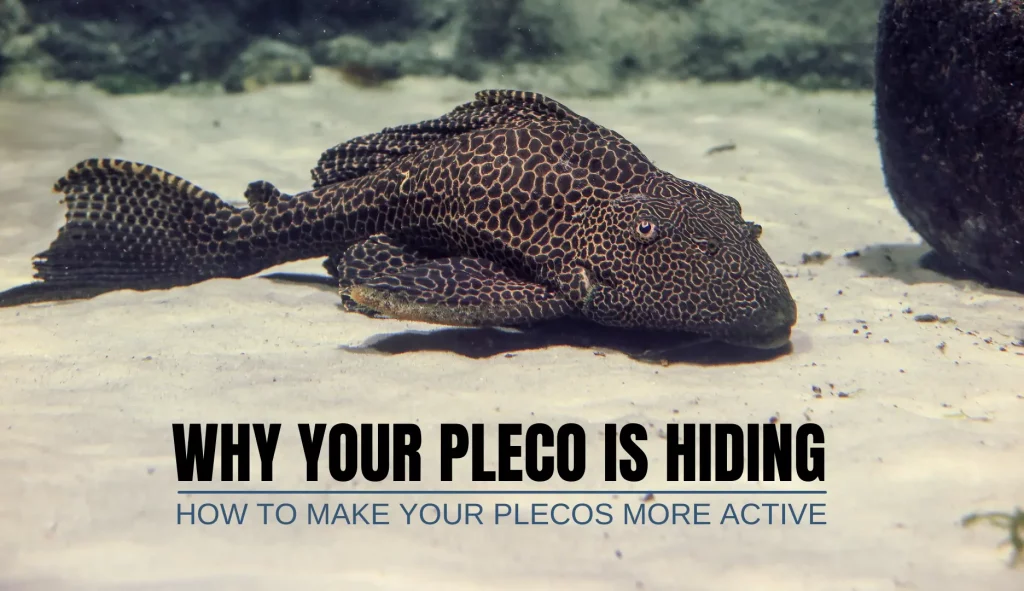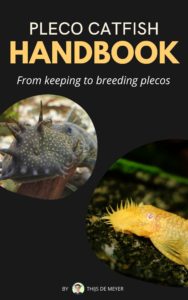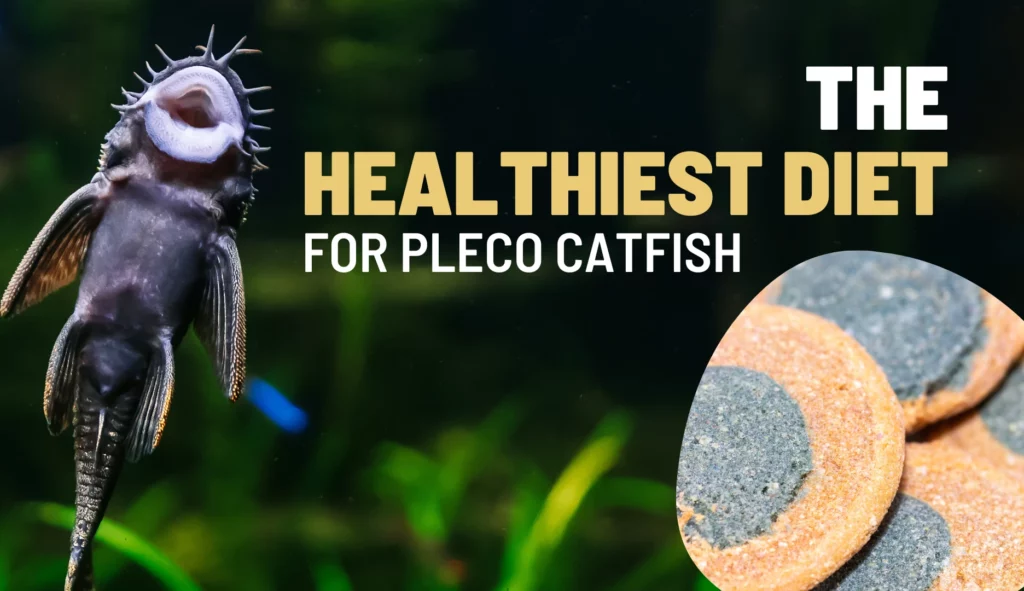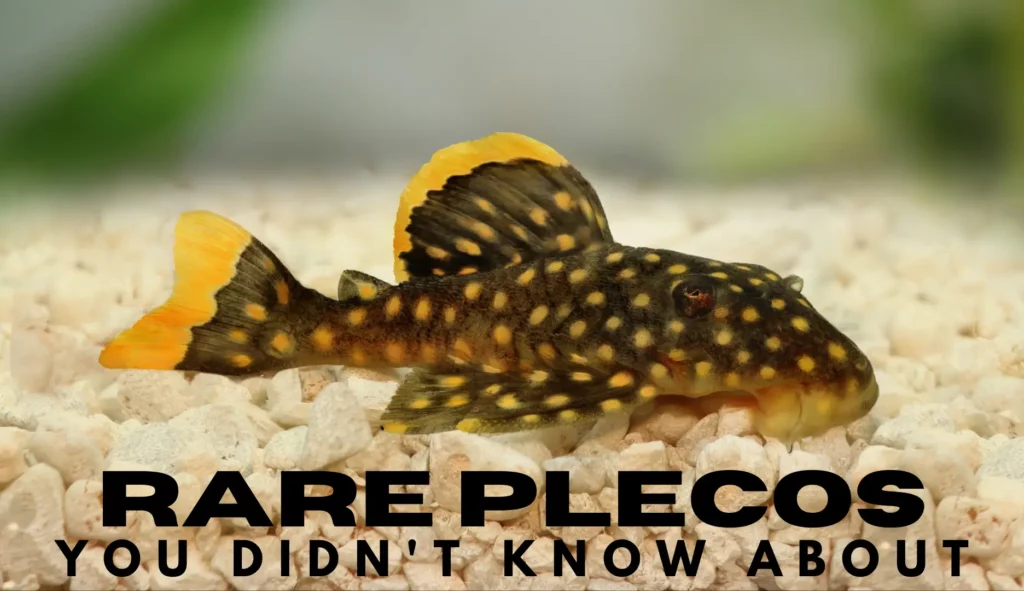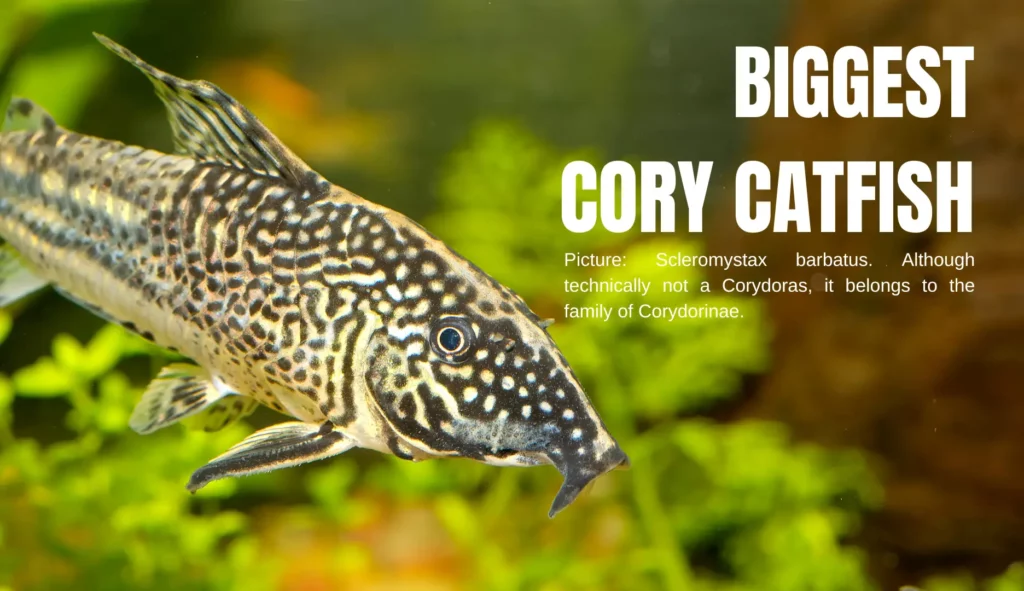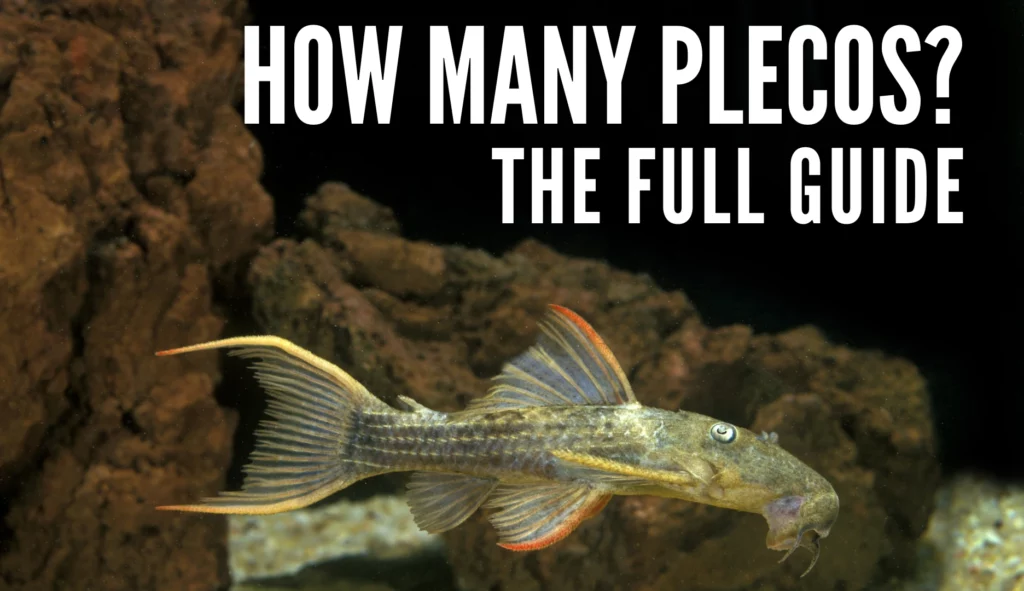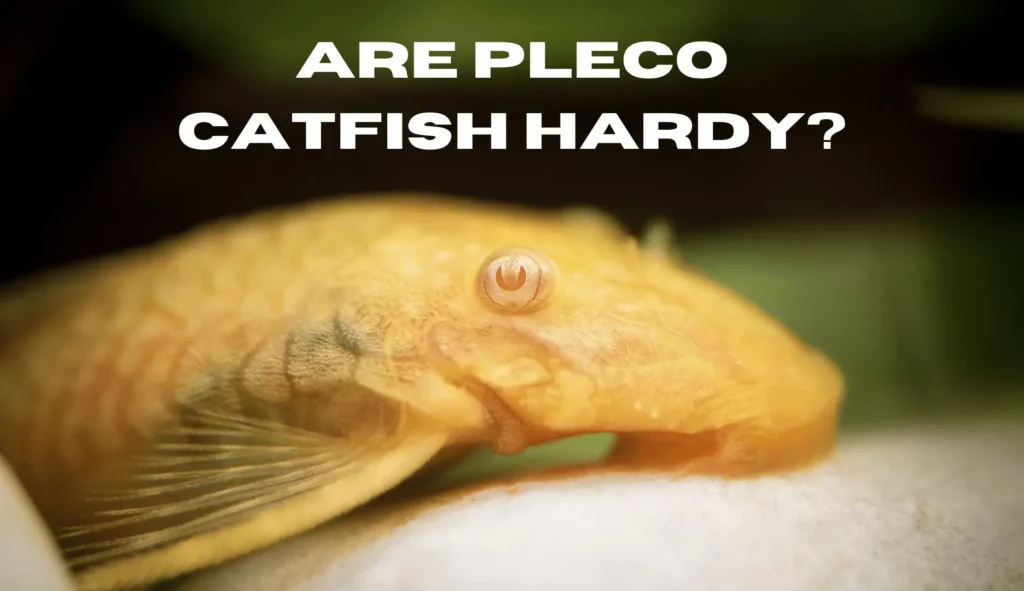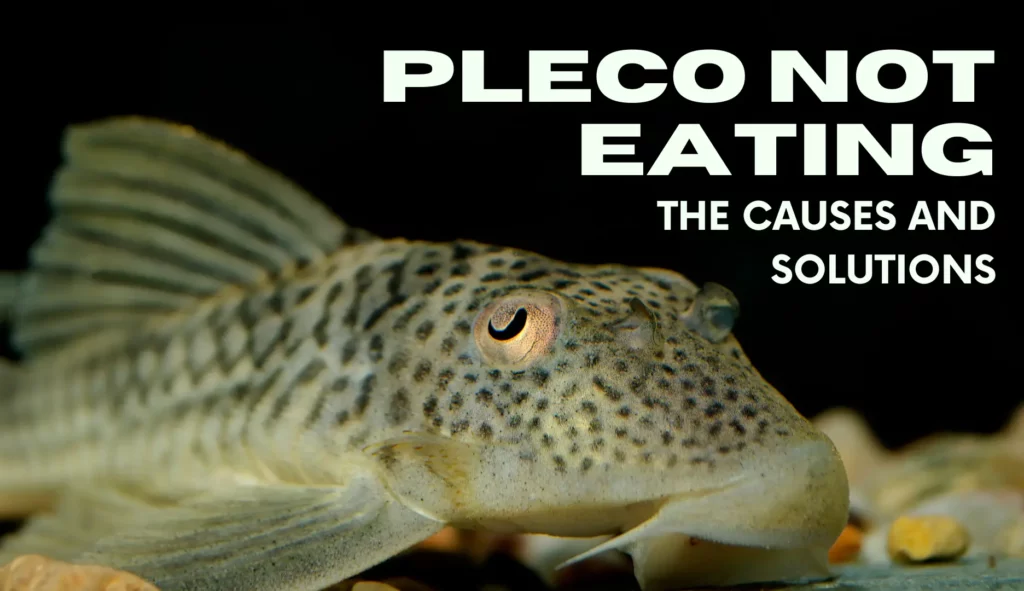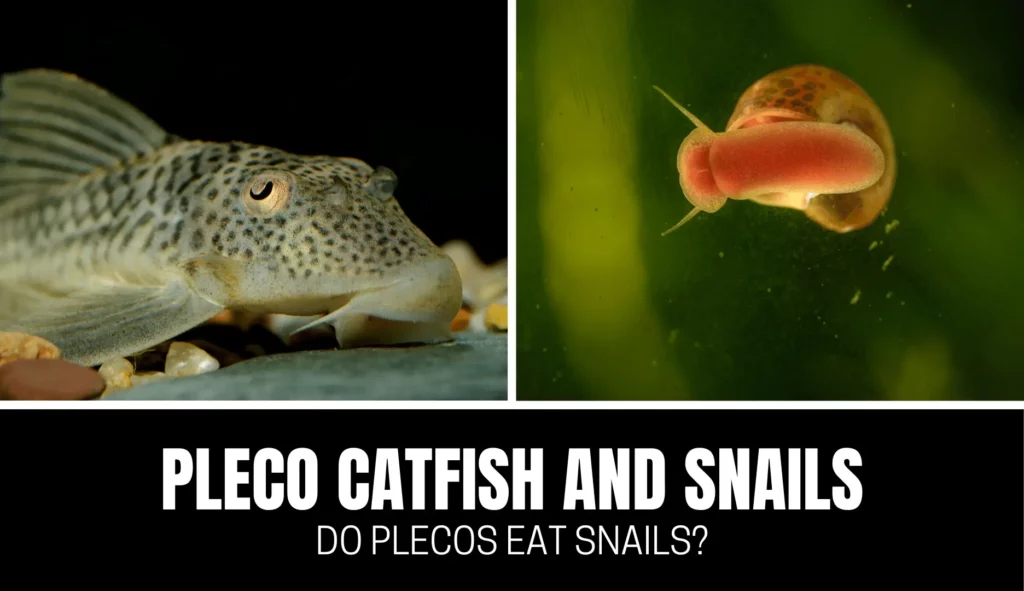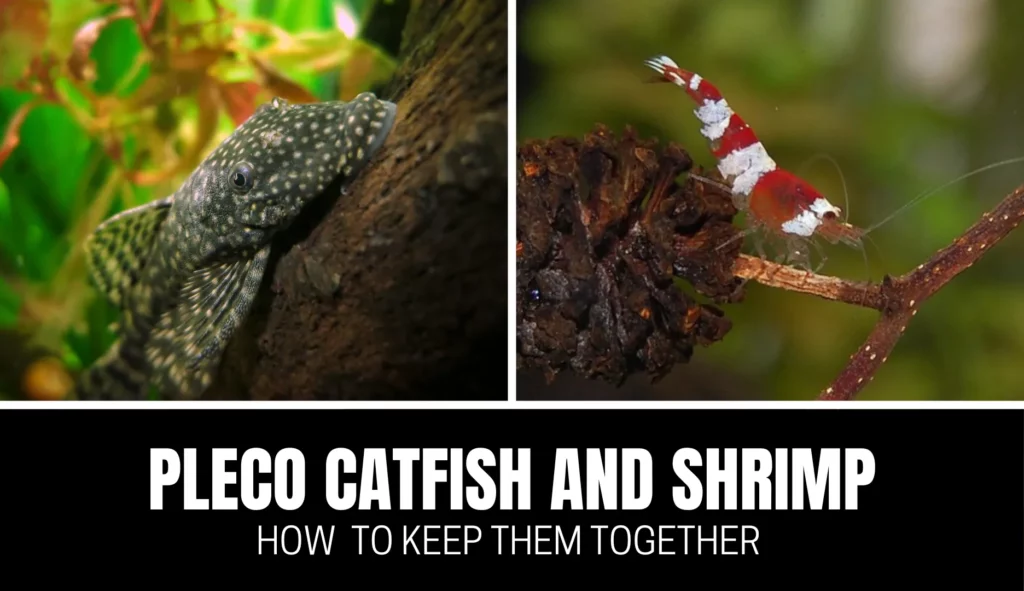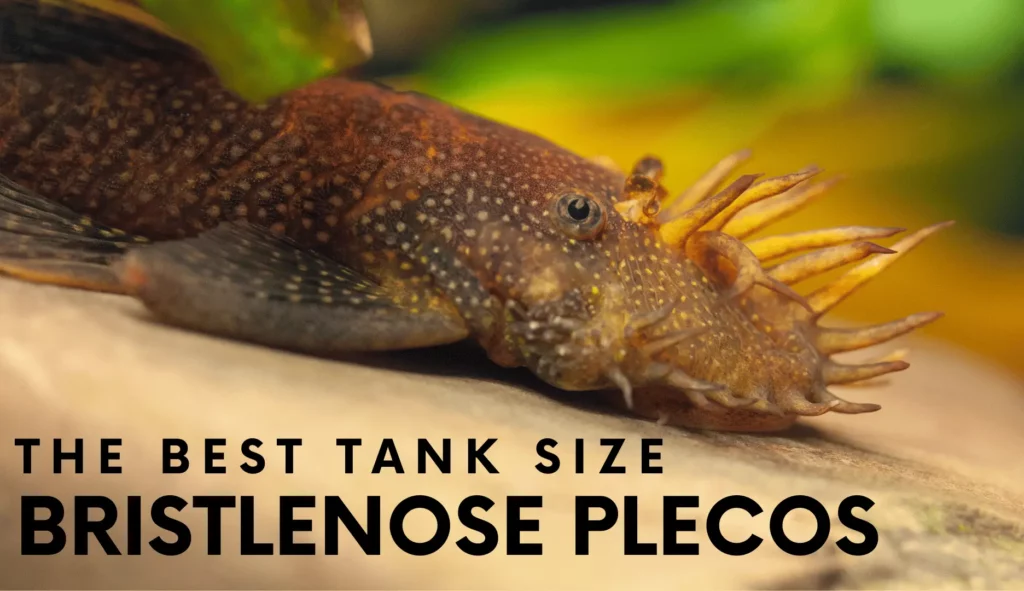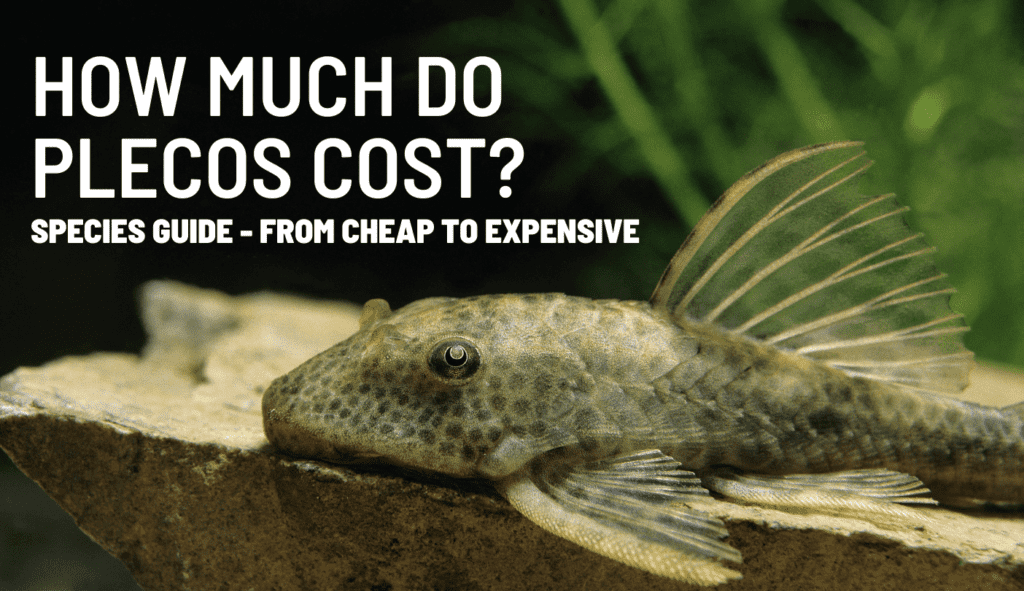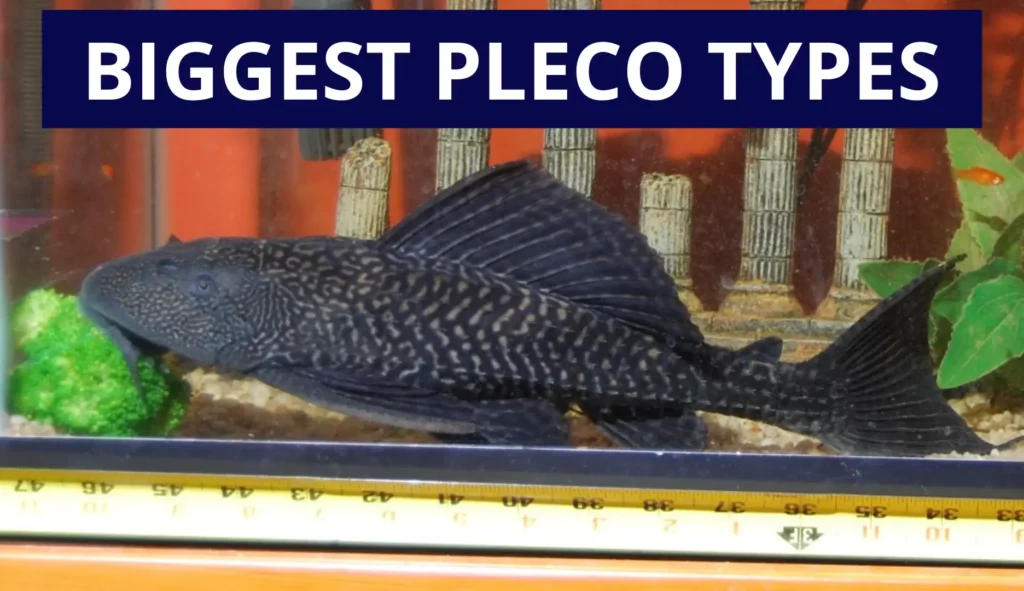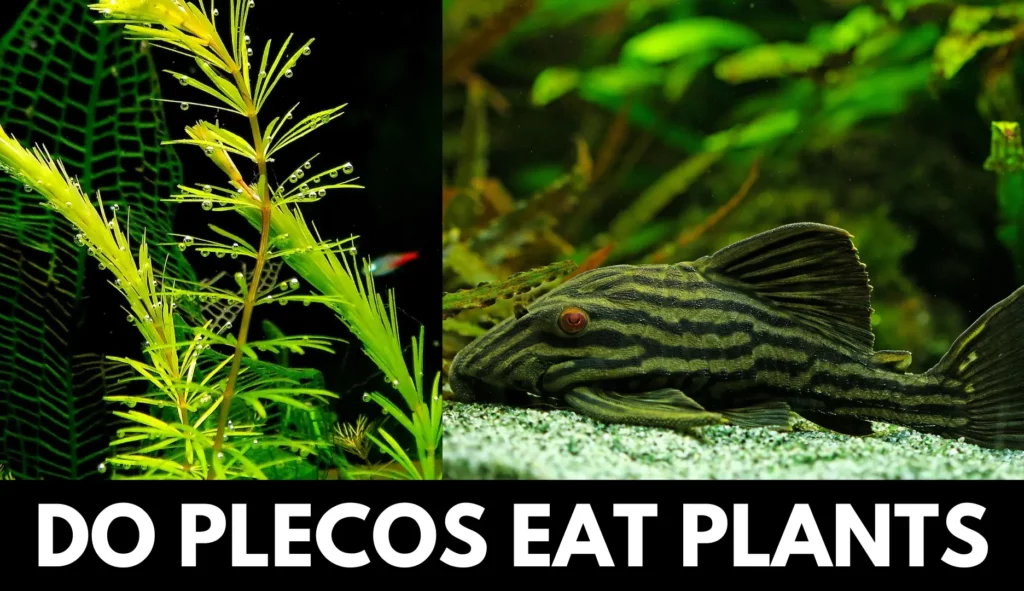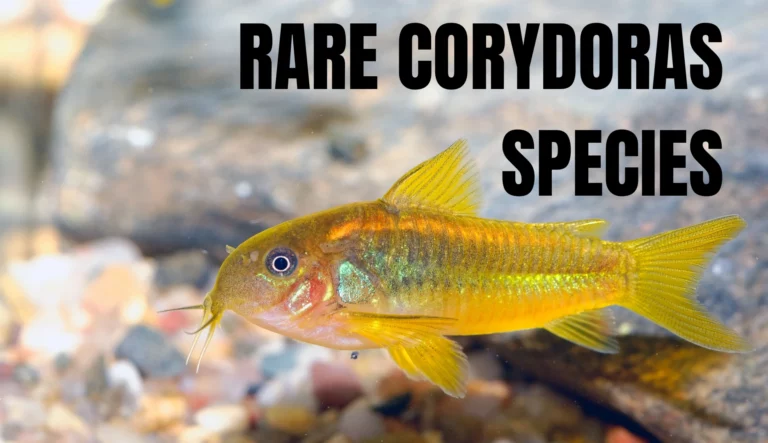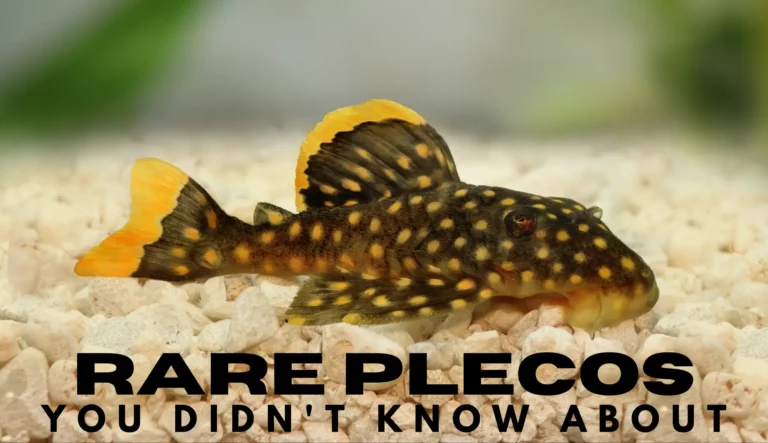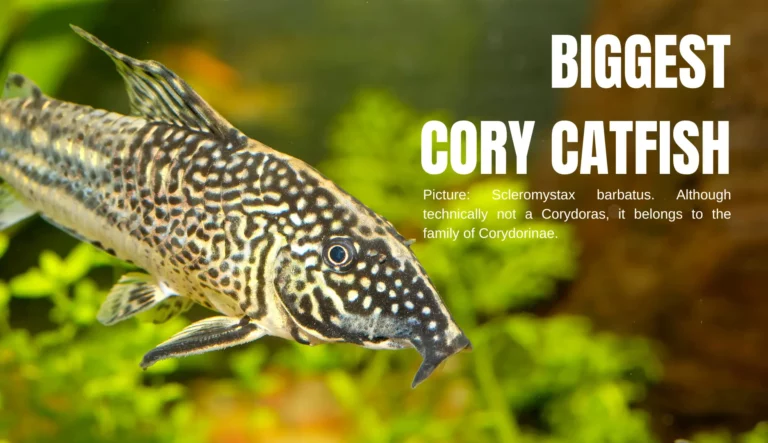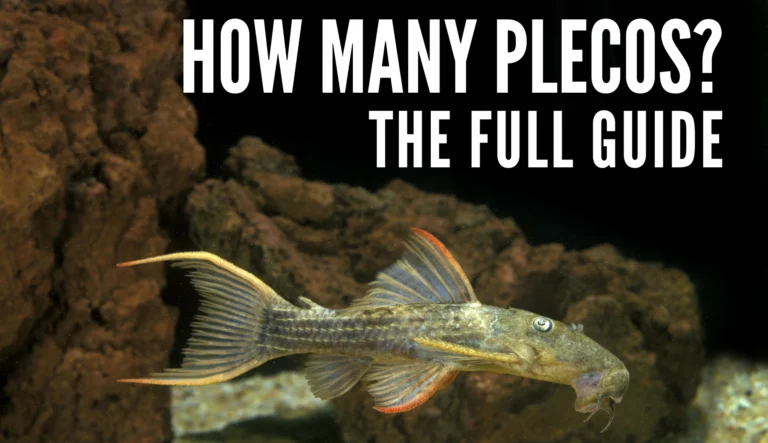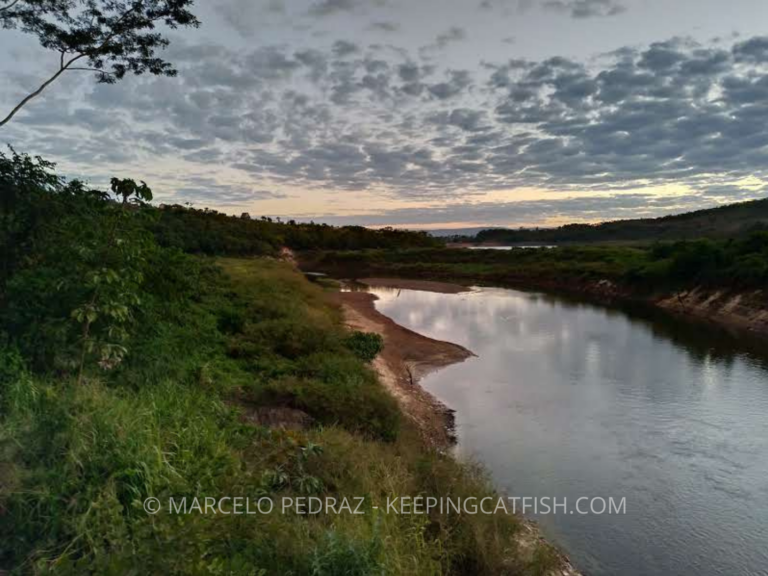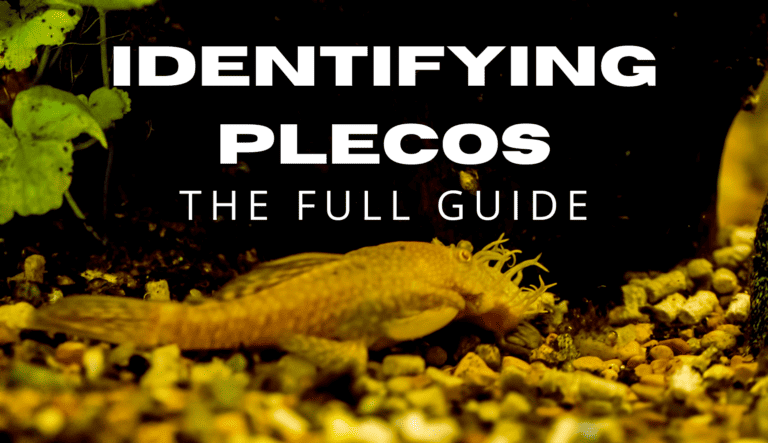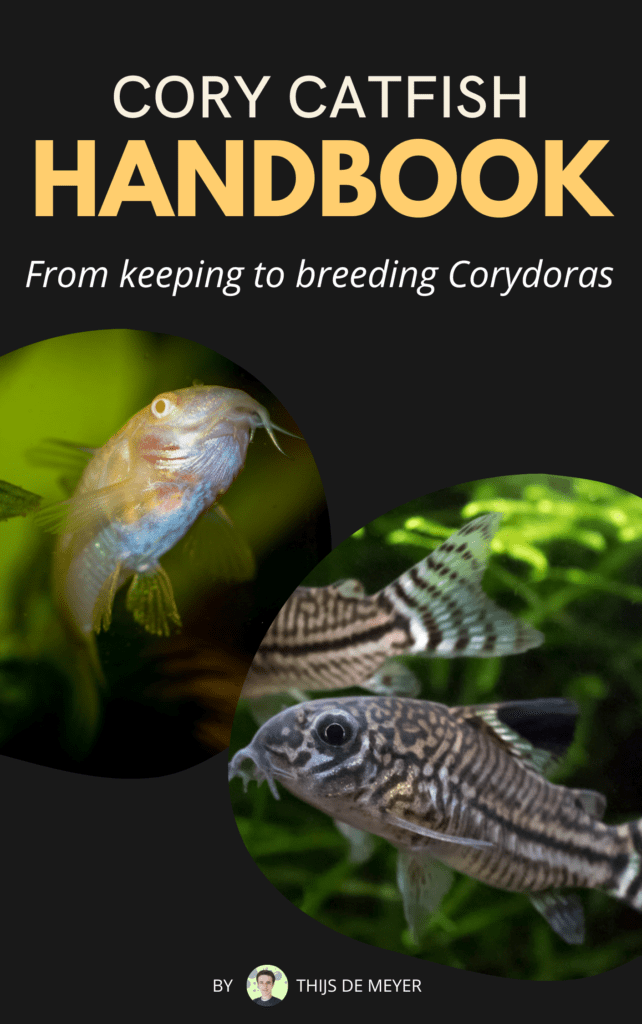In the years I have been keeping pleco catfish, this is one of the concerns I get the most often: plecos that hide all the time, and only come out at night.
This unfortunately leads to many people believing that that’s just a pleco’s nature, while it isn’t! Plecos can perfectly be active during the day so you can enjoy them! But how do you do that?
3 tips to get your plecos to be more active
Provide hiding places or natural cover
This is the thing I see most frequently done wrong. And frankly, in most of the cases the problem. People set up their tanks, buy their fish but forget one thing: plecos need hiding places.
It might seem very counterproductive: adding hiding places to makes your pleco hide less.
But actually, you should look from the pleco’s perspective. It’s obvious that it feels more comfortable in a tank where it has lots of cover for potential danger, vs. a tank with little to no hiding places.
If your tank has only very few natural covers, you might find it hiding behind your filter or heater all the time or even burying themselves.
It’s important to notice that you should not try to mimic the tank setup in the pet store. These places often merely decorate their tanks, just because it’s easier to catch fish this way.
5 types of hiding places
Pet stores sell a ton of decoration for in your tank. So much, that it’s sometimes hard to make a choice.
First things first, stay away from Nemo or fairy tale-like decoration. These are mostly not the type of structures where plecos like to hide.
Here are 5 good pleco hiding places:
- Wood
Wood is the best type of hiding place for plecos, hands down. It’s both natural and good-looking and there are many kinds of wood available. Plecos will love hanging around wood because in their natural habitat there is a lot of wood.
Did you know that many pleco species eat wood? Another reason to add wood to your tank. I’ve actually written an entire article on this. Read “Why Plecos Need Driftwood” for more about this.
- Stones
Stones are great, but might not provide as many holes or actual places for plecos to hide in than f.e. wood. This is why my favorite type of stone is slate. You can easily create your own structures with it and even create your own pleco caves by gluing them.
- Plants
Plants are great for every fish tank. Plecos will notice it when there are live plants, and feel way more comfortable in a natural setup with plants that cover them from above. It’s a misconception that all plecos will eat plants. In fact, it’s very rare for plecos to eat plants. Read my article on the best plants for plecos here.
- Terracotta or clay pots
No need to buy expensive decorations in the pet store. You might have some terracotta pots left, which make ideal hiding places for plecos. The best way is to cut these in half, so you create a cave-like structure.
Examples of well and bad decorated tanks
Not sure what’s enough hiding places? Here are some examples of good vs. bad setups.
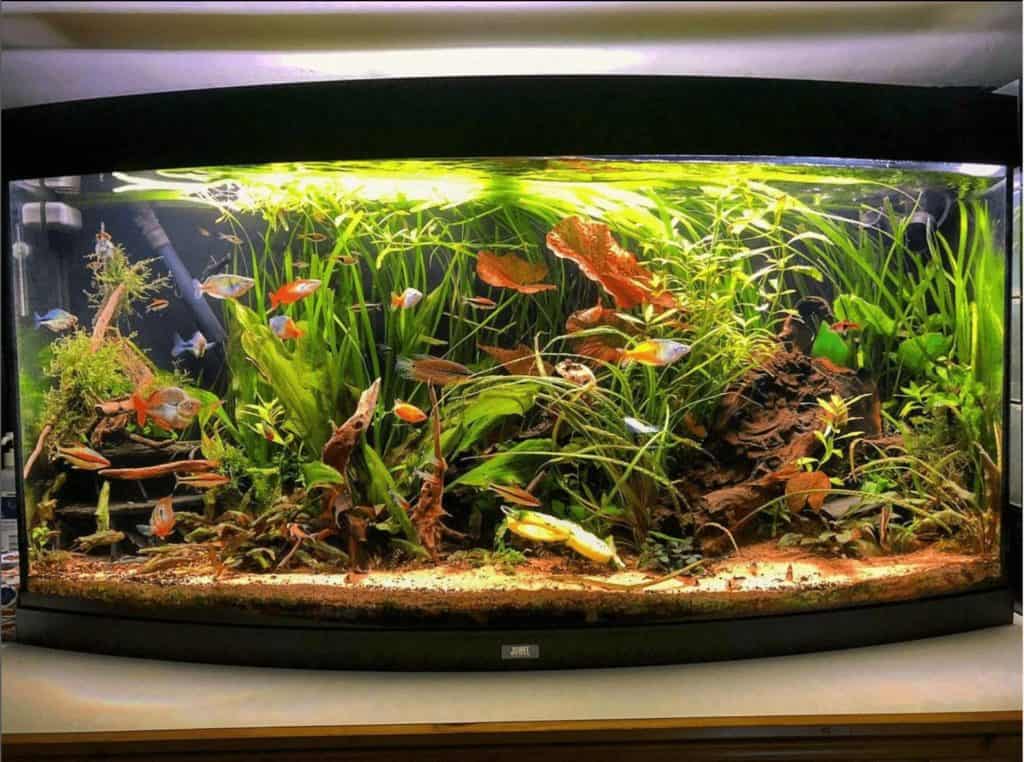
As you can see this tank is full of plants, wood and even some stone. This is the perfect habitat for plecos.
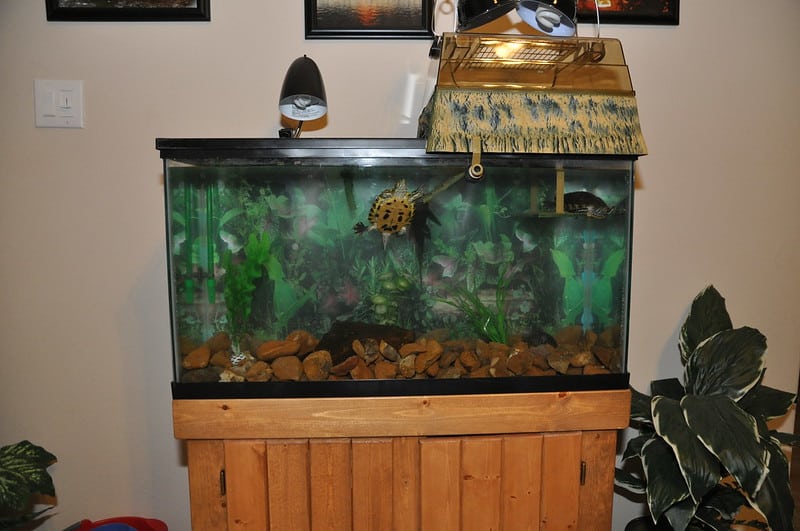
This is an example of how you shouldn’t do it. Except for keeping turtles and plecos together, this tank provides little to no hiding places for the common pleco (?). Smaller plecos might hide between the rocks, but this big suckerfish has no place to get away.
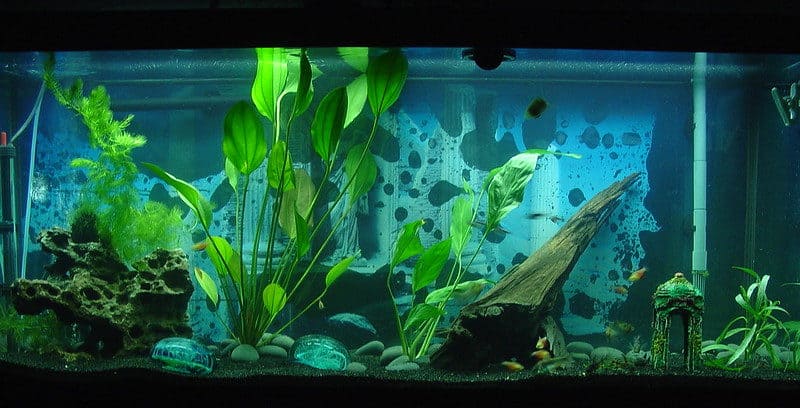
you don’t have to be a master at aquascaping like the first example. This person is doing a good job at adding both wood and some stones. The only thing I’d recommend is adding some more plants or optionally some caves.
Extra tip: use dark gravel
Dark gravel makes plecos feel calmer. They can camouflage way better into a dark background and feel calmer overall. But their colors also tend to come out way better: a double win.
Other types of sand are fine, too, but stay away from bright white sand or colored rocks. These will stress out the pleco and your other fish!
Add other active plecos or bottom dwellers
I got this tip from Malik @ AquaMalik. He mentioned adding some bristlenose plecos to every tank where he was seeing shy fish. Primarily with wild-caught specimens, that tend to be shyer.
If you have a shy pleco and space left to add another individual, you can add some lively young fish or active plecos. There’s a good chance your shy pleco(s) will replicate this behavior. Later, you could remove them.
Add other active schooling fish
I’ve actually learned this tip from Eric Bodrock from AllOddBallAquatics.com. When hearing it, it sounded so obvious.
Plecos live in the lower water layer, which means they are always looking at the fish above them for signals for possible danger.
If you add a group of schooling fish like f.e. tetras, plecos have more reasons to think everything is fine. When there aren’t any fish, on the other hand, they might feel like there is a potential danger.
Extra reasons why you're pleco is hiding
Males competing with each other
Do you have multiple plecos in your tank? Then there’s a good chance that males might be hiding from each other.
You see, when you keep multiple males in one tank, there will always be one dominant male. This male will mate most often and claim the best territory.
However, if your tank is too small or doesn’t have enough natural hiding places, the less dominant males might be forced to hide.
I would recommend you always keep 2-3 female plecos to one male. This way, males will find less need to fight.
Secondly, as suggested above, it’s extremely important to have enough caves or hiding places.
During mating, plecos can get aggressive and males will assert dominance by claiming the best spots for themselves. It’s recommended to provide one good hiding place (or pleco cave) per fish (including females).
Pleco hiding behind filter/aquarium equipment
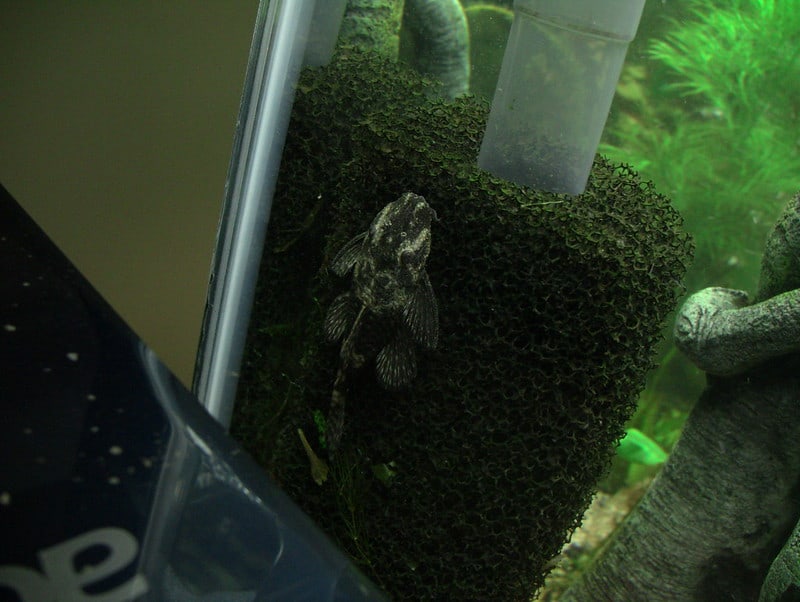
Plecos often hide behind the filter or heater, because it’s a safe place with less light and away from potential danger. This is most likely because it’s stressed and there’s a lack of other hiding places.
But this isn’t necessarily the case. In the above picture, this bristlenose pleco is just sitting on the filter intake, while there’s a good amount of natural hiding places visible. Most likely to eat off of the biofilm growing on the filter intake.
Plecos need time to adjust
Plecos are sensitive fish. It might just be that your pleco needs some time to get used to its tank and therefore is shyer. This is nothing to worry about.
It can take up to 6 months for your pleco to get settled. Mostly it will not take that long, but you can expect it to take a couple of weeks. Especially wild-caught fish tend to take longer to adjust.
Wild caught fish are shyer
In the pleco hobby, it’s not uncommon to see wild-caught fish pass by. These fish are taken from the wild and thus have more wild instincts left in them.
They are used to running from predators and hiding more. It’s also obvious that a fish that’s been taken from its home is less comfortable in artificial conditions like your tank, with other fish and totally different decor.
Unfortunately, there’s not much you can do except for trying to replicate the pleco’s wild habitat as much as possible.
Plecos live in the Amazon basin. In order to give your wild-caught fish the best possible care, you should try and mimic as much of this natural habitat as possible.
Be aware though that not all plecos live in muddy blackwater streams. Zebra plecos f.e. live in the big fast-flowing and oxygen-rich Rio Xingù.
I’d recommend you take a look at Planet Catfish to check the natural habitat of the pleco species you are keeping.
Plecos are not more active at night
Unlike popular belief, plecos are not nocturnal fish. They are diurnal, which means they are active during the day.
As a result of this misinformation, many people believe that their pleco hides during the day because it’s active at night. While in reality, the pleco will come at night because it feels forced to do so and doesn’t feel comfortable.
I hope that this blog post gave you some more useful information on how to make your pleco more active to solve this.
Read our entire article on are plecos nocturnal for more.
Bonus tip: add pleco caves
We’ve come to my favorite part to talk about: pleco caves. As the name suggests, these caves are caves specifically made for pleco catfish.
Plecos spend most of their time around hiding places. That’s just their nature. Pleco caves are my number one way to provide hiding and breeding opportunities.
They are easy to place in your tank and to take out, you can get them in all sizes and shapes, and plecos love them!
So, no reason to not buy pleco caves. You’ll see that your pleco male will claim this cave and hang out around this most of the time. As a bonus, your plecos are much more likely to spawn in a special cave than in wood or other hiding places.
I’ve tested many caves, but my favorite pleco caves are from Pleco Ceramics. At $13, you can get a high-quality cave for your pleco. they’re available on their website.
Final thoughts
If your pleco is hiding, there are a couple of things you can do to make it more active:
- Add natural hiding places such as wood and plants
- Add schooling fish that incentivize the pleco’s natural behavior
- Add other, nonshy or active fish
Here are some more reasons I found that can cause your pleco to hide:
- Competition between males
- Plecos need time to adjust
- Wild-caught fish tend to be shyer
There’s also a common misunderstanding in the fish-keeping community that plecos would be nocturnal. This is not true. Plecos are active during the day. This means that this isn’t the reason your pleco is hiding.
Lastly: I’d recommend adding pleco caves to your tank. They’re my favorite type of hiding place and they’re great for breeding, too!

